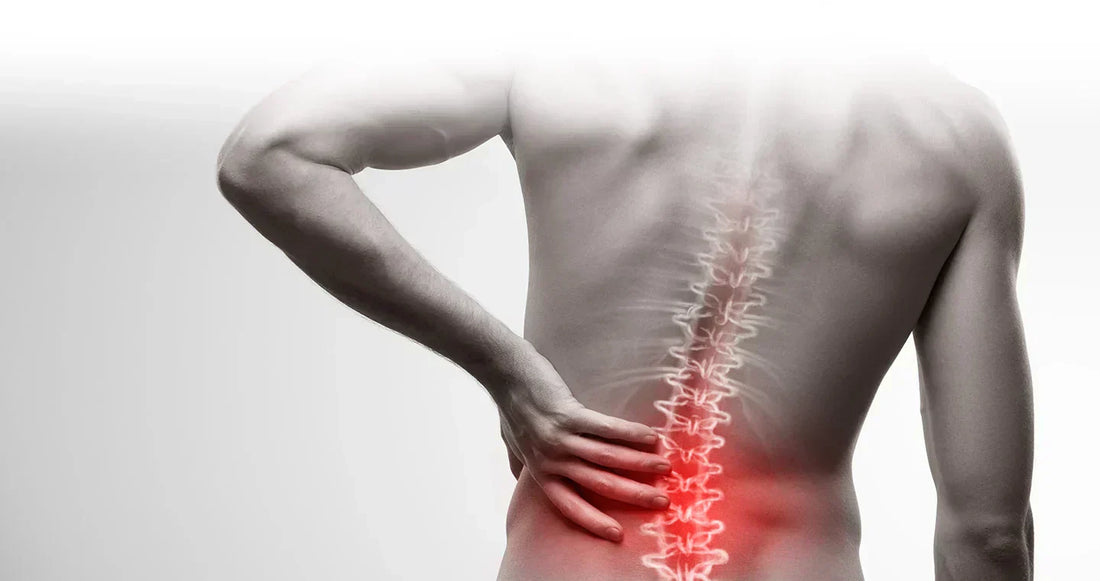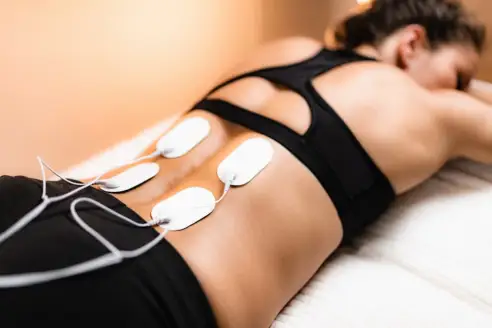
Managing Lumbar Back Pain: Exercises & Tools That Actually Help
Share
Lower back pain is one of the most common issues I see in clinic — and it’s no surprise. Whether it’s caused by long hours at a desk, poor posture, injury, or stress, lumbar pain can quickly interfere with your everyday life.
In this post, I’ll walk you through simple exercises you can do at home and supportive tools (like TENS units and lumbar cushions) that I regularly recommend to patients.
💪 Gentle Exercises for Lumbar Relief
-
Lumbar rotations: Lie on your back with your knees bent and your feet flat on the floor. Extend your arms out to the sides and keep your shoulders on the mat at all times. Keeping your knees together, gently drop them down to one side, rotating your pelvis. Hold for 3–5 seconds and release. Repeat 10–15 times.
-
Cat-Cow stretch: Start on your hands and knees with your back in a neutral position. alternate between arching your back up (😸) and dipping it down (🐮). Great for improving spinal mobility.
-
Bird-dog exercise: I promise they're not all named after 2 random animals. Start on your hands and knees, with your hands under your shoulders, and knees under your hips. Tighten the abdominal core muscles. Extend the opposite leg and the opposite arm simultaneously, making sure you maintain good torso control. This builds core stability and spinal support.
-
Knee-to-chest stretch:Pull one knee toward your chest while lying down. Hold for 20–30 seconds and switch legs. Do 2–3 rounds per side.
⚡ Supporting Tools for Back Pain Relief
1. TENS (Transcutaneous Electrical Nerve Stimulation) Machines
TENS units use gentle electrical impulses to help blchronic lower back pain or flare-ups when used correctly.
📚 Evidence:
A 2022 review in Pain and Therapy found TENS to be effective in reducing chronic low back pain intensity when used consistently and as part of a broader treatment plan. Meaning it is great to manage pain but don't use it solely to treat your pain.

2. Lumbar Chair Support Cushions
Poor sitting posture is a major contributor to lumbar discomfort — especially if you’re working at a desk. A supportive cushion can help maintain the natural curve of your spine, reducing muscular strain and stiffness.
Evidence:
A study in Applied Ergonomics (2019) showed that lumbar support cushions significantly improved sitting posture and reduced self-reported discomfort in office workers.
🏁 Final Thoughts
Combining gentle movement with targeted support is one of the most effective strategies for managing lumbar back pain. Try the exercises above consistently, and consider supportive tools like a TENS machine or lumbar cushion to help you stay mobile, comfortable, and in control of your recovery.
At YourPhysioNeeds, we’re offering BIG discounts on both of the above products — so get in early and manage your pain with expert-picked solutions you can trust.
If you're unsure whether these tools are right for you, always speak with a qualified physiotherapist — or drop a comment below, and I’ll be happy to help.
References:
Johnson, M. I., Paley, C. A., Jones, G., Mulvey, M. R., & Wittkopf, P. G. (2022). Efficacy and safety of transcutaneous electrical nerve stimulation (TENS) for acute and chronic pain in adults: a systematic review and meta-analysis of 381 studies (the meta-TENS study). BMJ open, 12(2), e051073.
Makhsous, M., Lin, F., Hendrix, R. W., Hepler, M., & Zhang, L. Q. (2003). Sitting with adjustable ischial and back supports: biomechanical changes. Spine, 28(11), 1113-1121.
